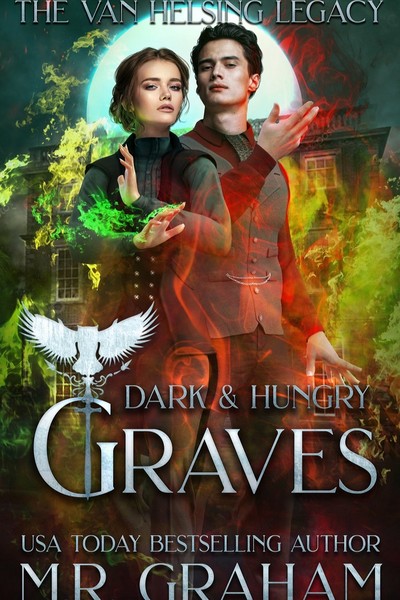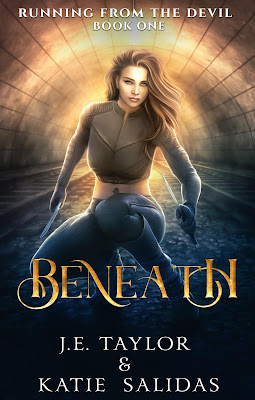Writing seems easy from the outside. Anyone can string a few words together and create a sentence. Throw a few sentences together and you have a paragraph. What’s so hard about that?
Because of this implied simplicity, most people approach novel writing
with rose-colored glasses
. They imagine themselves in some romanticized fashion, sitting window side in some posh little café, during a thunderstorm. The words flow smoothly as they tap away on the keyboard while simultaneously sipping a mug of steaming coffee and daydreaming about book signings and best-seller lists.
Such a pretty dream. Now comes the pinch to wake you up...
The fact is, crafting a complete and compelling story is work. Hard work. It's late night fights with uncooperative characters, bouts of crippling impostor syndrome, and the taunting blink of the cursor on the empty page as you struggle to pry those unwilling words from the deepest recesses of your mind. Most new writers, as they
begin to realize this, find themselves lost and wondering if they will ever be able to complete the novel they’ve been dreaming of writing.
Do not despair, dear author. Help is out there if you want it.
Book Coach to the rescue!
What is a Book Coach?
Glad you asked.
Separately these words are self-explanatory. Books are books.
Duh.
Someone has to write them. I’m assuming, if you’re reading this, you’re probably writing one right now.
So we move on to the second word, Coach. Someone who helps an athlete achieve his or her potential. When you think about it, writing could be a
type of sport. Another word combo we might
choose to use is Author Personal Trainor.
Yes. I like that, let’s toss that into the mix.
Sounds cooler, don’t you think?
When you hire a
Personal Trainer at a gym, you know that person
is going to make you sweat. Their job is to provide (high decibel) motivation and outline the path to help you get into shape. You could do everything they tell you on your own, but if you’re hiring a Personal Trainer
, let’s face it, you haven’t (or won’t). Admit it, how many New Year Resolutions began with, “I
’m going to get into shape?” More than you care to admit, right? No judgement here. I’m right there with you. Next year will be my year. 2020. I promise this time. I mean it. What? You don’t believe me?
Hrmph.
Back on point. You turn to a
Personal Trainer to get you on the right track. They have the know-how,
the education, experience, and the right
kind of can-do attitude that will motivate you
to finally get in shape. The same applies to a Book
Coach, or Author Personal Trainer. They help you get your manuscript in shape for publishing.
Stuck on your manuscript?
They will push you past the writer’s block.
Story suffering from a
saggy second act?
They will help you trim the fat.
Having trouble hitting your daily word count? Drop and give me twenty… chapters.
They are the Kings and Queens of accountability.
Getting the idea now?
Accountability and a bit of tough love are part of the process. But a book coach is not just a drill sergeant. They provide
the guidance and motivation (tough love) and help nurture your creativity.
We all, new authors and veterans alike struggle with the creative aspects of writing. No one is immune to
writer’s block.
Pantsers and Plotters both find themselves, at some point, being mocked by an empty page. Writing is not as solitary a craft. When you’re stuck, you need someone to bounce ideas off of. But not just anyone will do. Yes, I know your mom or your best friend are always there for you, and the encouragement they offer is priceless. But, (there’s always a
but) do they understand setting, characters, and conflict well enough to help you develop them properly?
Let’s say you want Character X to do “the thing” because it sounds like a
really cool thing for Character X to do. You can write all kinds of words about Character X “doing the thing” and realize later that “doing the thing” was a
really stupid decision for Character X to make. Now you’
re faced with the prospect of deleting words you slaved over. (Kill your darlings? The horror!!) What if “doing the thing” causes more problems in the story than you, as the author,
are prepared to fix? Writer’s block is often about not knowing how to fix a problem rather than not having ideas of cool “things” for characters to do.
Will doing “the thing” work in your story? That’s the difference between getting advice from a friend or guidance from a
book coach. While a friend might have fantastic ideas for what Character X could do next, a book coach will make you see the story
as a whole so you understand
if Character X
should “do the thing” and how “doing the thing” will affect the story. Your book coach knows that cool things in a story and characters' actions must be more than eye candy drama; they must make sense to the plot.
Understanding the complexities of plot and story structure is essential to helping a blocked writer find their footing. Your book coach will work with you on developing your plot on multiple levels. They’ll run you through exercises like character bios, beat sheets, and help you outline the plot of your story so you can write with clarity and confidence.
Writing is the easy part. Next comes re-writing.
Oh, sorry, did you think you
were done? Remember that tough love we talked about before? Here’s where your book coach becomes your frenemy. You’ll love them for it later, I promise, but this next potentially painful part is necessary.
Getting you through that first draft is something to celebrate. Achievement unlocked. Merit badge earned. Happy dance time! But, (see, there is always a
but) that first draft is far from being a ready-to-publish book. It’s time to polish that baby until it shines. And this is where your book coach will help you make it sparkle like the stars above.
As the author, you will be too close to your work to see any of the flaws. You might finish that first draft and immediately want to publish it.
Stop. Belay. Cease. Hold up. Wait!
Don’t Do That! For the love of all that is right and good in the world, never do that!
Our brains play a little trick on us when we read our own writing. We know what we meant to say, so our brain puts that filter on as we read the hot mess brilliance we’ve slaved over.
When I coach people on the writing
phase I tell them to use this as their mantra.
"The first draft is supposed to suck!"
You see, no one but you
reads that first draft, so you don’t have to worry about perfection. It’s one secret I
use to help writers get through the first draft. But, just getting through that first draft, while it is an accomplishment, is not something ready for public consumption.
It is the second draft that you
begin to refine the work into something resembling a book. And to do that, you will want someone to look at it objectively, with a fresh set of eyes, and point you towards what needs the most work. Hello, Book Coach!!
Trust me on this. A first draft is not something you want to submit to an editor at a major publishing house, or God forbid, let book reviewer get a hold of.
With the eagle eyes of your book coach, you’ll be able to catch plot holes, character inconsistencies, and basic grammatical mishaps. These are the things you’ll want to clean up before anyone, other than your mom and best friend, sees.
So you’ve made it through
writer’s block, and you’ve slogged through revisions. Pat yourself on the back. You’ve done a good job so far. But you’re still not done.
Wait, what? Not done?
But…(there’s that but again)
This writing thing sure is tough, eh?
What do you plan to do with the book once you’ve written it? Thought about it much? Indie, Traditional, Small press? How will you bring this book to market? Do you know how to proceed once you write those final words, the end?
Your book coach is there to help you through the entire process of producing your book. No matter which direction you take in publishing, you can feel confident that there is someone in your corner who’s been-there-done-that.
If you plan to go the traditional route, you will need a killer query.
What’s a query, you ask?
So inquisitive. I love that about you!
A query is part sales pitch and part resume. Because if you’re trying to get your book published by the Big 5, you need a killer pitch to entice them to pick up your book. Even if you’re aiming at Small Press Publishers, a query is essential. Publishers decide on whether to pick up a book based on market research and profitability projections as much as they factor in quality of writing. So, when you pitch to them,
you have to bring your “A” game. They want to know if your book will be worth the risk they take in publishing it.
The query typically follows the following format:
- Personalized Introduction (be polite and use their name, not a form letter)
- Logline: One sentence pitch. (exciting details only)
- Two paragraph summary (focusing on the main character and main conflict only)
- Closing paragraph with author information. (your mini resume)
- All of this should be no more than 250 words.
If you thought writing the book was tough, try distilling that 80k words down to 250 words. Yes, you read that right. Two, five, zero. Not a lot of words for all that plot you just agonized over and perfected. This is the part that has authors wanting to drive hot pokers into their eyes to avoid doing. Know anything about
Copywriting? Your book coach does. This is a special skill.
Every word must be chosen carefully when you have so few to use and so much on the line. It has to be perfect.
Screw that noise, you say?
You’re just going to self-publish.
Who needs all that querying and constantly refreshing your email? Waiting and praying. Eating your feelings as the clock taunts you with its incessant ticking. Why hasn’t my dream agent responded? It's because I’m a hack writer, isn’t it? It has to be.
Refresh.
New email.
Can’t look.
Eyes squeezed tight, finger hovering over the mouse button.
Must click. Must look.
Ugh! Spam for a new fad diet promising 20lbs of weight loss in the next 30 days. Though it might come in handy with all the binge eating, that wasn’t what you were waiting for.
Dare you refresh again?
What if the agent replies?
What if the answer is no?
Oh god, why did I become a writer???
Sorry. Got off track again.
Don’t think you can get off easy by self-publishing your book. Oh no, dear author. Sweet, sweet, summer child! You get to write a summary too. But rather than use it to sell your book to an agent or publisher, you will use it as your product description/jacket copy.

Don’t worry, your book coach will still hold your hand as you take the plunge into the entrepreneurial world of publishing? And even beyond that, they can work with you on the marketing.
Do I dare discuss that part? Maybe I’ll save that for the next post. We’ve run
a bit long tonight.
As you can see, having a book coach during any step of the writing and publishing process can be to your benefit. And the beauty of hiring one, is that you are in control of how much time you want to spend working with them. Most work by-the-hour or offer pre-determined packages so you can keep your budget in check and get the help you need when you need it.
We’ll discuss what it’s
like working with a book coach in a follow up post. If you have
any questions at
all, regarding book coaching, please
feel free to contact me.
https://www.katiesalidas.com/p/freelance-services.html
Happy Writing!
 From kids hoodies to adult t-shirts, we've got some fun Merch from your favorite indie podcast, Spilling Ink, and my Agents of ASSET and Little Werewolf book series.
From kids hoodies to adult t-shirts, we've got some fun Merch from your favorite indie podcast, Spilling Ink, and my Agents of ASSET and Little Werewolf book series.

































